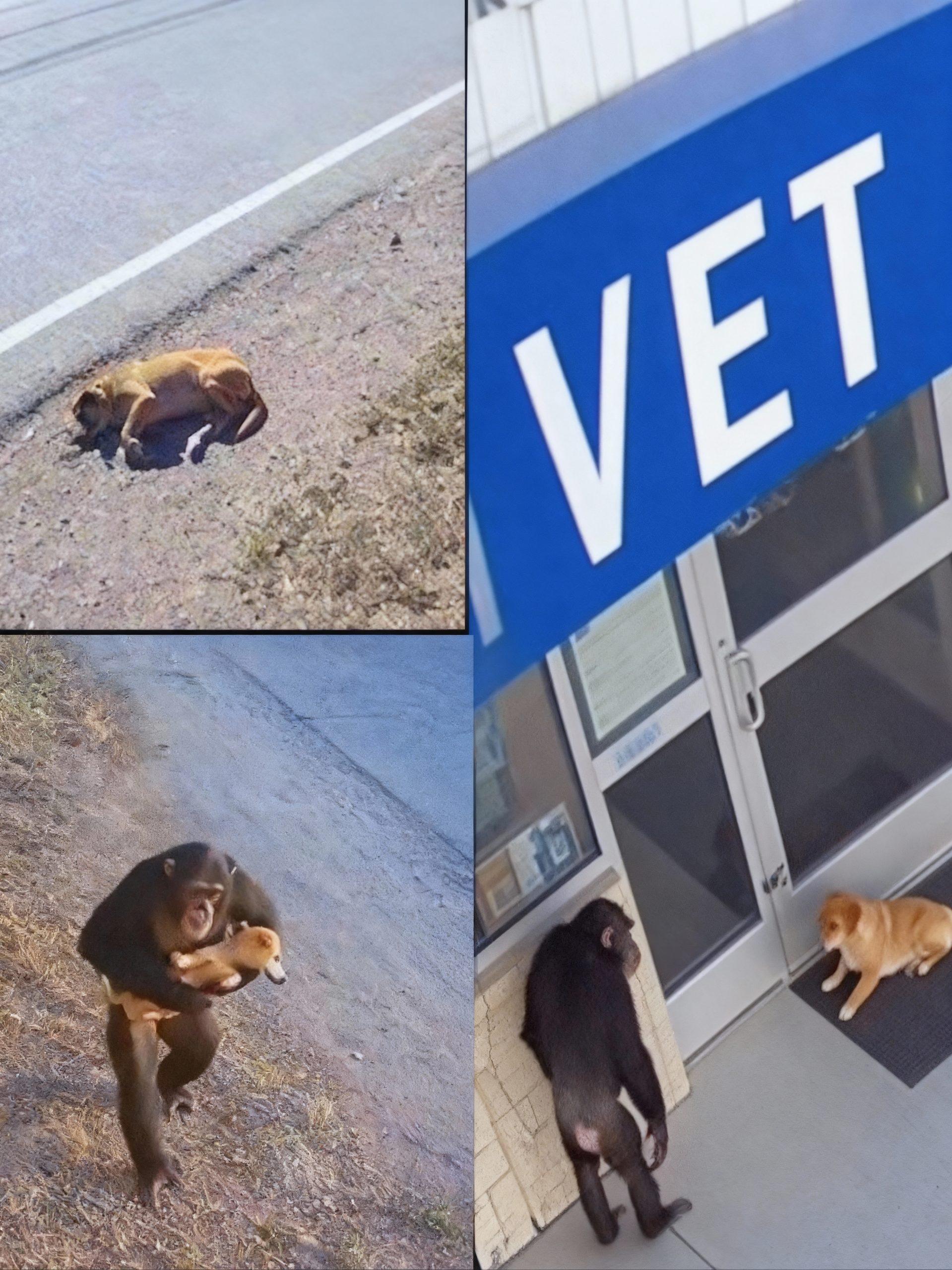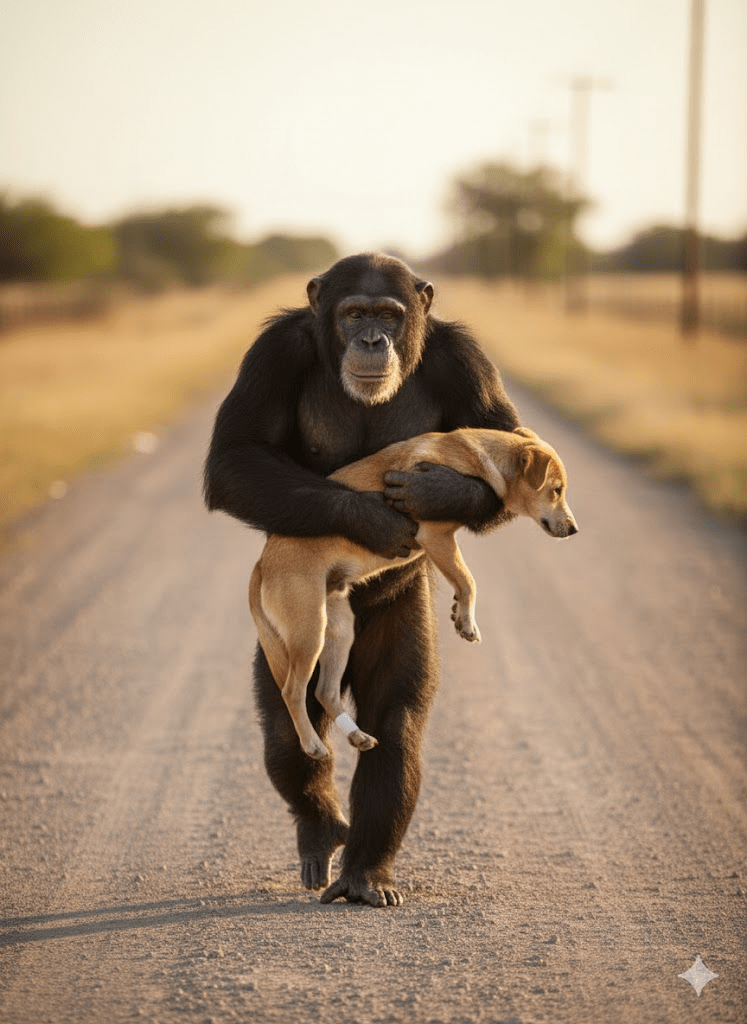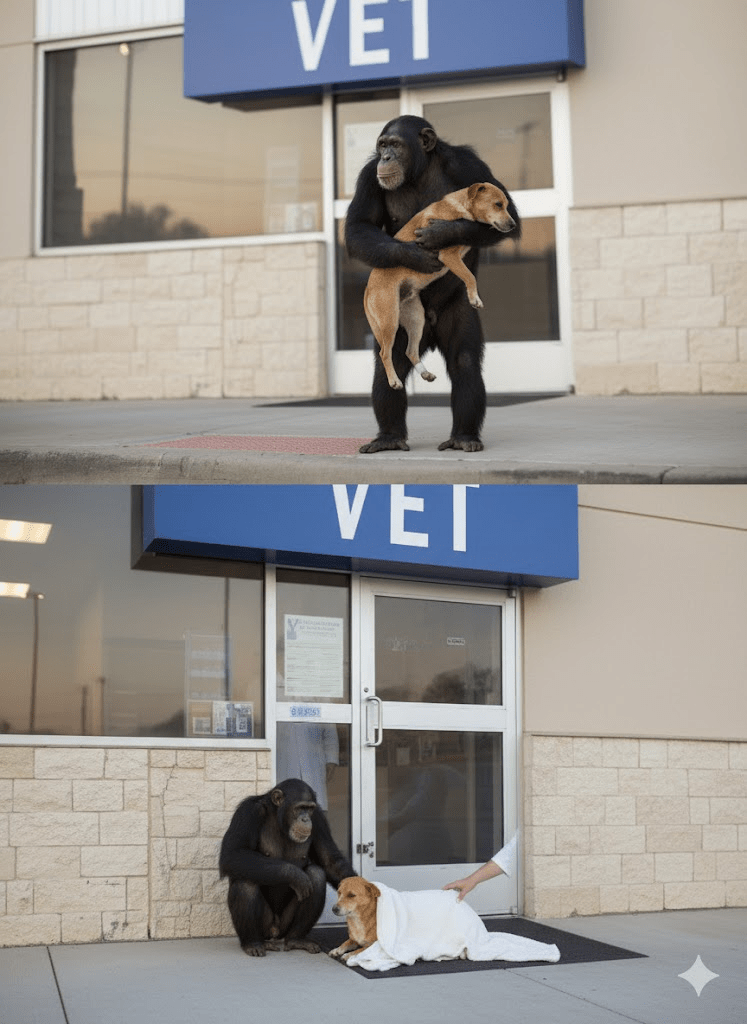In a world often characterized by its complexities and challenges, moments of profound simplicity and unexpected compassion can emerge, reminding us of the innate goodness that sometimes lies dormant, waiting for the right circumstances to surface. The viral sensation captured in a series of poignant images depicting a chimpanzee rescuing an injured dog is one such instance, a narrative that has resonated deeply across social media platforms and news outlets globally. This isn’t merely a heartwarming tale; it’s a powerful testament to the multifaceted nature of empathy, suggesting that the capacity for altruism is not exclusively a human trait. The sequence of events—from the discovery of a vulnerable, injured canine by a primate, to the careful transportation of the animal, and finally, the apparent seeking of professional medical assistance at a veterinary clinic—paints a vivid picture of interspecies solidarity. This remarkable display challenges our preconceived notions about animal intelligence, emotional depth, and the boundaries of care, prompting us to reflect on what truly defines compassion. It invites a deeper exploration into the behavioral ecology of chimpanzees, often celebrated for their complex social structures and problem-solving abilities, and how these attributes might manifest in truly extraordinary ways when confronted with vulnerability and distress. The story compels us to look beyond species lines and consider the universal language of suffering and the spontaneous impulse to alleviate it, regardless of genetic proximity or learned behavior. It highlights a critical juncture where instinct, intelligence, and an undeniable sense of concern converge, creating a narrative that is both educational and deeply moving, leaving an indelible mark on anyone who encounters it.

The initial scene, depicting a small, presumably injured dog lying motionless on the side of a rural road, sets a somber tone. It evokes a common scenario, one that often elicits feelings of helplessness in human observers. The vulnerability of the dog is palpable, a silent plea for assistance in a seemingly desolate environment. This image alone is enough to stir an emotional response, laying the groundwork for the extraordinary intervention that follows. It underscores the fragility of life, particularly for creatures left to fend for themselves in environments shaped by human activity, where dangers like traffic are ever-present. The sun-baked ground and the stretch of empty road further emphasize the dog’s isolation, making the subsequent intervention all the more remarkable.

The sudden appearance of the chimpanzee, approaching the inert dog, instantly shifts the narrative from tragedy to potential hope. Chimpanzees are known for their intelligence and complex social behaviors, but their direct intervention in the rescue of another species, particularly one as unrelated as a dog, is an unprecedented event in the public eye. The subsequent image, showing the chimpanzee carefully lifting and carrying the dog, is nothing short of astounding. The way the chimpanzee cradles the dog suggests not just physical capability, but a gentle, protective instinct. This action transcends mere curiosity or opportunistic behavior; it speaks to a deeper level of concern, an empathetic response to perceived distress. This moment is pivotal, establishing the chimpanzee not as an observer, but as an active participant in the dog’s survival.

What follows is arguably the most compelling and perplexing part of the story: the chimpanzee bringing the injured dog to a veterinary clinic. The unmistakable “VET” sign above the entrance leaves no room for ambiguity about the chimpanzee’s apparent intention. This act suggests a level of cognitive understanding and problem-solving that is truly remarkable for a non-human primate. It implies not just an awareness of the dog’s injury, but also a comprehension of where help might be found for such an ailment. This is not simply an instinctual reaction; it hints at a capacity for logical inference and a rudimentary understanding of cause and effect in a complex, human-built environment. The image of the chimpanzee and dog at the clinic entrance challenges the traditional boundaries we often draw between human and animal intelligence, suggesting a continuum rather than a stark division.


The implications of this series of images extend far beyond a heartwarming story. For primatologists and animal behaviorists, it offers a fascinating case study in interspecies interaction and problem-solving. While observations of primates exhibiting empathy within their own species are well-documented, this direct, purposeful intervention to aid a creature from an entirely different order raises new questions about the evolution and expression of altruism. It prompts researchers to consider if such behavior is an isolated incident of extraordinary circumstances or if it points to a more widespread, albeit rarely observed, capacity for cross-species compassion in highly intelligent animals. The incident could inspire further research into the cognitive processes that drive such actions and the environmental factors that might facilitate them.







